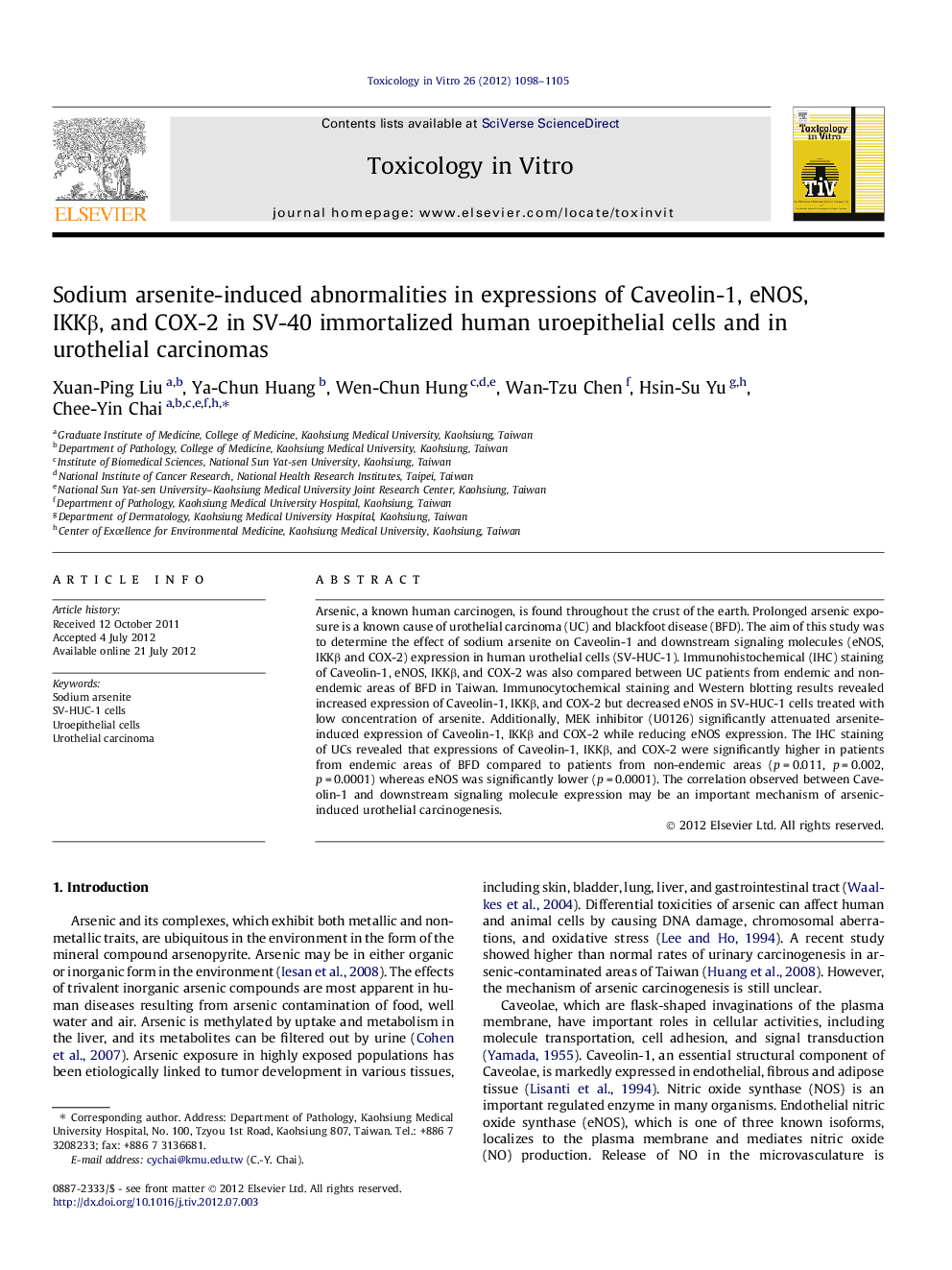| Article ID | Journal | Published Year | Pages | File Type |
|---|---|---|---|---|
| 5862988 | Toxicology in Vitro | 2012 | 8 Pages |
Arsenic, a known human carcinogen, is found throughout the crust of the earth. Prolonged arsenic exposure is a known cause of urothelial carcinoma (UC) and blackfoot disease (BFD). The aim of this study was to determine the effect of sodium arsenite on Caveolin-1 and downstream signaling molecules (eNOS, IKKβ and COX-2) expression in human urothelial cells (SV-HUC-1). Immunohistochemical (IHC) staining of Caveolin-1, eNOS, IKKβ, and COX-2 was also compared between UC patients from endemic and non-endemic areas of BFD in Taiwan. Immunocytochemical staining and Western blotting results revealed increased expression of Caveolin-1, IKKβ, and COX-2 but decreased eNOS in SV-HUC-1 cells treated with low concentration of arsenite. Additionally, MEK inhibitor (U0126) significantly attenuated arsenite-induced expression of Caveolin-1, IKKβ and COX-2 while reducing eNOS expression. The IHC staining of UCs revealed that expressions of Caveolin-1, IKKβ, and COX-2 were significantly higher in patients from endemic areas of BFD compared to patients from non-endemic areas (p = 0.011, p = 0.002, p = 0.0001) whereas eNOS was significantly lower (p = 0.0001). The correlation observed between Caveolin-1 and downstream signaling molecule expression may be an important mechanism of arsenic-induced urothelial carcinogenesis.
⺠The MEK inhibitor attenuated arsenite-induced expression of Caveolin-1 in SV-HUC-1. ⺠Higher expression of Caveolin-1 in urothelial carcinomas of arsenic-contaminated area. ⺠The Caveolin-1 is important in arsenic-induced urothelial carcinogenesis.
